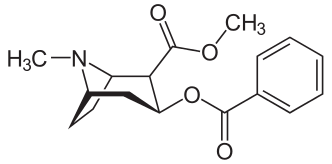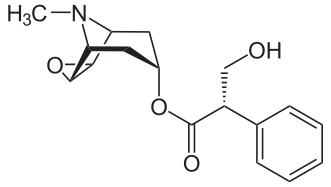ebola?
Bluelight Crew
Deprenyl is a rather fine substitute to most of the traditional stimulant medications currently employed in the states.
Well, l-deprenyl is pretty commonly prescribed, even off-label (eg, for depression).
ebola
N&PD Moderators: Skorpio | someguyontheinternet
Deprenyl is a rather fine substitute to most of the traditional stimulant medications currently employed in the states.
Can anyone give me a reason why this drug wouldn't be fun?
http://isomerdesign.com/PiHKAL/explore.php?domain=pk&id=306
maybe add an N-methyl?
I'd like to know more about why the 4-chloro position might be better/worse for you than, for instance, a 4-methyl or 4-methoxy? I mean in effects and toxicity.
perhaps i'm just missing out a lot because I don't have the physical version of pihkal but I feel like there could be a really basic phenethylamine substitution that is being massively overlooked. Maybe it wouldn't get you extremely fuckedddd upppp or whatever but more of just a basic stimulant/empathogen that can provide relatively harmless 5-ht release or something useful like that.
is there a resource where Nichols has data on https://en.wikipedia.org/wiki/6-CAT and possibly more of his non-neurotoxic compounds?
perhaps i'm just missing out a lot because I don't have the physical version of pihkal
I don't think there's much discussion of SAR in the first part of PiHKAL, the "Extensions and Commentary" sections tend to be the juiciest, the first half is an autobiography, and IMO isn't particularly important.
As with all medications, benefits and risks need to be weighed in recommending cannabis to patients. We present an algorithm that may be useful to physicians in determining whether cannabis might be recommended as a treatment in jurisdictions where such use is permitted.
Concerns have long been voiced that rapid tolerance to adverse effects might portend tolerance to beneficial effects. Data from studies using oral sprays of cannabinoids or dronabinol in multiple sclerosis report that individuals can reduce the incidence and severity of adverse effects by downward self-titration without loss of analgesia. Other studies in this population note that overall the incidence and severity of adverse effects diminishes over time without evidence of tolerance to analgesic effects. Yet it is rare that clinical trials of cannabinoids extend follow-up beyond 12 weeks, leaving questions on maintenance of gains or need for dose escalation unanswered. One study with 12-month follow-up concluded there may be sustained analgesia for pain associated with multiple sclerosis, where about 30% of cannabinoid-treated participants report continued “improvement” at 12 months compared to about 15% on placebo on doses conservatively limited to a maximum of 25mg THC daily. This suggests that pain relief may be sustained without dose increases. But the study design was not intended to determine the proportion of patients who experienced diminution of effect, or whether dose escalation, even within the set boundary, was needed for maintenance of efficacy.
Sick burn, guys.The classification of marijuana as a Schedule I drug as well as the continuing controversy as to whether or not cannabis is of medical value are obstacles to medical progress in this area. Based on evidence currently available the Schedule I classification is not tenable; it is not accurate that cannabis has no medical value, or that information on safety is lacking. It is true cannabis has some abuse potential, but its profile more closely resembles drugs in Schedule III (where codeine and dronabinol are listed). The continuing conflict between scientific evidence and political ideology will hopefully be reconciled in a judicious manner [...]
Abstract
Emotional face processing is critically modulated by the serotonergic system. For instance, emotional face processing is impaired by acute psilocybin administration, a serotonin (5-HT) 1A and 2A receptor agonist. However, the spatiotemporal brain mechanisms underlying these modulations are poorly understood. Here, we investigated the spatiotemporal brain dynamics underlying psilocybin-induced modulations during emotional face processing. Electrical neuroimaging analyses were applied to visual evoked potentials in response to emotional faces, following psilocybin and placebo administration. Our results indicate a first time period of strength (i.e., Global Field Power) modulation over the 168-189 ms poststimulus interval, induced by psilocybin. A second time period of strength modulation was identified over the 211-242 ms poststimulus interval. Source estimations over these 2 time periods further revealed decreased activity in response to both neutral and fearful faces within limbic areas, including amygdala and parahippocampal gyrus, and the right temporal cortex over the 168-189 ms interval, and reduced activity in response to happy faces within limbic and right temporo-occipital brain areas over the 211-242 ms interval. Our results indicate a selective and temporally dissociable effect of psilocybin on the neuronal correlates of emotional face processing, consistent with a modulation of the top-down control.
Participants were excluded, if they had history of drug dependence, as assessed by a self-made consumption questionnaire, or if they were currently using drugs as assessed by a urine drug test. Nevertheless, seven participants were occasional smokers (<6 cigarettes/day), 7 participants reported a sporadic or rare cannabis use in the past (<2 joints/month), one participant reported previous experience with MDMA (one pill lifetime), and one reported previous experience with psilocybin (one administration lifetime).
researchers have even found it possible to largely recreate the effects of opioid agonists using nothing more than serotonin modulation systems (closed loop) on mU knockout mice.
All six of the evaluated unipolar patients (demographic and clinical characteristics see Table 1) suffered from a major depressive episode according to DSM IV criteriaand had proven to be pharmacoresistant despite stepwise treatment with at least two antidepressants from different biochemical classes given in sufficient dosages for an appropriate duration. No psychiatric and no significant somatic comorbidity could be evaluated. In two patients ECT had been performed before treatment with ketamine infusions. In the other four patients, ECT had been also discussed as a treatment option but was refused by the patients. All patients were informed about the off label therapeutic use and possible side effects of ketamine infusions and gave their written informed consent before initiation of ketamine therapy. Treatment was started with a 40 minute administration of 0.25 mg S ketamine/kg body weight i.v. in the presenceof the psychiatrist and an anesthesiologist. [...] Three patients showed an improvement in depressive symptoms in both the short and the longer term in two patients (one male, one female), the HAMD score indicated remission (see Figure 1 and Table1); in one male patient treatment was discontinued
because a severe dissociative condition was reported after the first administration. One of the female patients also reported pronounced dissociative symptoms.
Repeated S-ketamine Infusions in Therapy Resistant Depression: A Case Series
J. Clin. Pharmacol., Sept. 2013 http://onlinelibrary.wiley.com/doi/10.1002/jcph.122/abstract
5/6 is pretty good, I think.
 and the effects are so different! ha
and the effects are so different! ha

the study said:40 minute administration of 0.25 mg S ketamine/kg body weight i.v.
the study said:in one male patient treatment was discontinued because a severe dissociative condition was reported after the first administration. One of the female patients also reported pronounced dissociative symptoms.